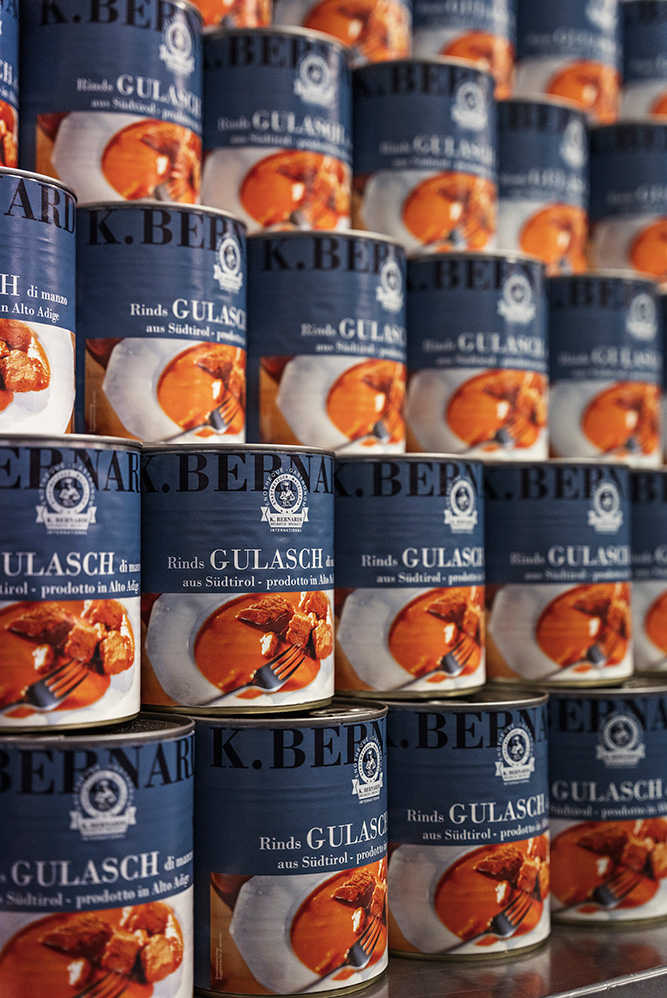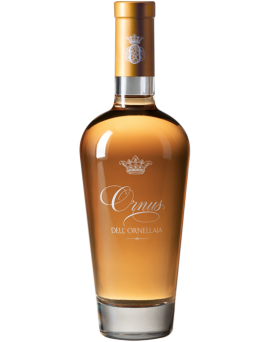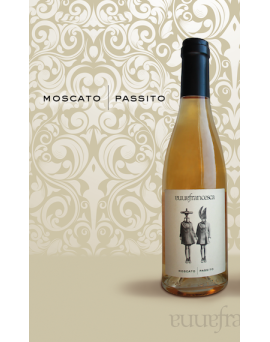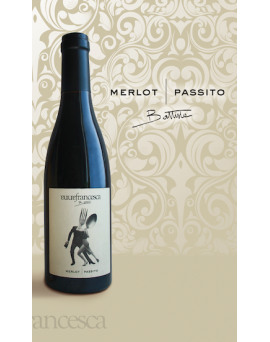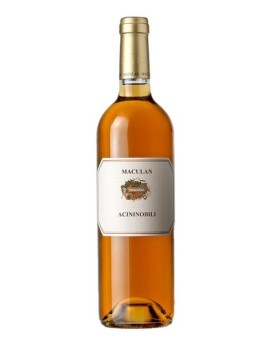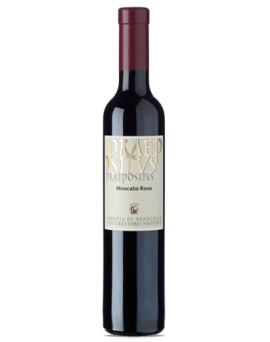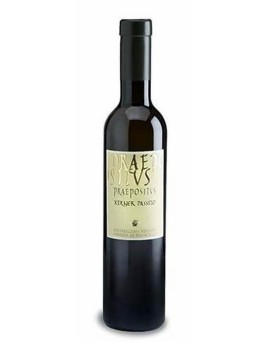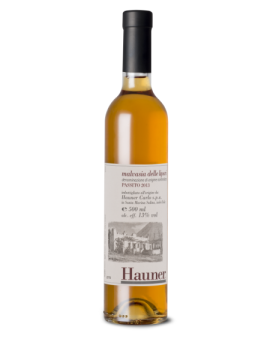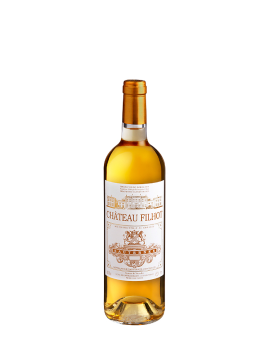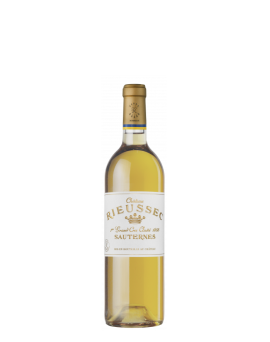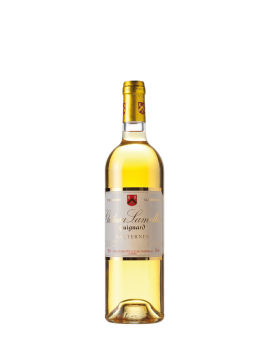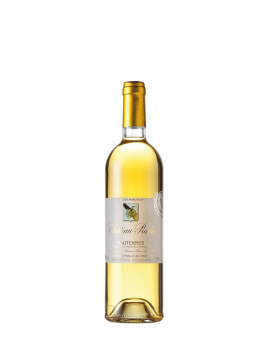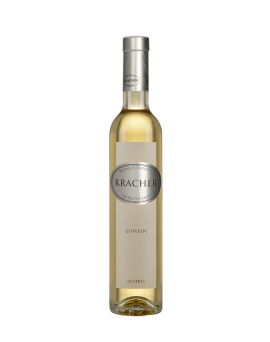Basket
0
Active filters
Sisters Passito di Moscato...
PASSITO DI MOSCATO GIALLO IGT<br /><br />Grape variety: Moscato giallo 100%<br />Training system: guyot<br />Harvest: by hand around mid-September<br />Vinification: drying of the grapes for 3 months in boxes. Minimum one year of ageing in steel tanks and at least 4 months in bottle<br />Bottle: 375 ml<br />Alcohol content: 13.5% vol<br />Residual sugar: 109 g/l<br />Acidity: 5.85 g/l<br />Colour: intense golden yellow<br />Aroma: acacia, orange blossom, candied citrus peel, yellow peach, tropical fruit and honey<br />Taste: enveloping, fruity, fresh and balanced between sweetness and acidity<br />Food pairing: dry pastries, cakes and spoon desserts, mature and blue cheeses<br />Recommended serving temperature: 10°C<br />
Price
€22.60
Battista Passito di Merlot...
BATTISTA - MERLOT IGT PASSITO WINE<br /><br />Grape variety: 100% Merlot<br />Training system: spurred cordon<br />Harvest: manual in mid-September<br />Vinification: drying of the grapes for 3 months in boxes. Minimum one year of ageing in oak barrels and at least 4 months in bottle<br />Bottle: 375 ml<br />Alcohol content: 14% vol<br />Residual sugar: 95 gr/l<br />Acidity: 5.5 g/l<br />Colour: intense dark red<br />Bouquet: rich and intense with notes of violets, red fruit jam, cherries in spirit and wood<br />Taste: deep and persistent, sweetness balanced by acidity and refined tannic texture<br />Food pairing: cocoa and dark chocolate desserts. Accompanies very mature cheeses. Excellent on its own as a meditation wine.<br />Recommended serving temperature: 10°C<br />
Price
€22.60
Acininobile 375ml MACULAN 1998
TYPE: Sweet wine - IGT<br />PRODUCTION AREA: the hills of Breganze.<br />GRAPE VARIETIES: 100% Vespaiola.<br />SOIL TYPE: volcanic and tuffaceous hills<br />VINIFICATION: manual and painstaking selection of grapes with Botritis cinerea in its larval form (noble rot).<br />COLOUR: shiny antique gold.<br />BOUQUET: great bouquet, intense and spicy with hints of acacia honey, dried fruit, sultanas and flint.<br />PAIRINGS: the pairing we suggest is a escalope of foie gras, but perfection is achieved in a glass, in front of the fireplace in good company!<br />FLAVOUR: sweet-not-sweet, full, elegant and sumptuous; excellent body and massive structure. The persistence is very long: an exciting experience!<br />AGEING: aged for two years in new Allier barriques, in bottle six months<br />
Price
€57.40
Praepositus Südt. Moscato...
PRAEPOSITUS MOSCATO ROSA<br />Alto Adige DOC<br /><br />Sparkling garnet red with brick-red reflections. Scented roses, preserved figs, Saturn peaches, dark berries, bitter chocolate, and coffee. Refreshing berries, fine sweetness,<br />stimulating spices.<br /><br /><br />Analytical data:<br />Alcohol content: 13% vol.<br />Acidity: 5,80g/l<br />Residual sugar: 103g/l<br />
Price
€31.60
Praepositus Kerner Passito...
South Tyrolean Valle Isarco Kerner Passito DOC Praepositus<br /><br />Bright, sparkling golden yellow. Intense aroma of acacia honey, pickled apricots, pear compote and pineapple. A concentrated wine with pleasant<br />acidity and elegant structure.<br /><br />Analytical data:<br />Alcohol content: 10% vol.<br />Acidity: 6,20g/l<br />Residual sugar: 166g/l<br />
Price
€40.30
Malvasia Lipari DOC Passito...
Malvasia delle Lipari<br />DOC passito<br /><br />THE COMPANY<br />A passion for oenology and for Malvasiadelle Lipari as the ultimate challenge of an intense life studded with interests. This was the spirit with which Carlo Hauner embarked<br />on his adventure in the Aeolian Islands in 1963; from painter to internationally renowned designer, he started wine production after restoring ancient terracing on the island of<br />Salina. His small revolutions in the cellar fascinated experts, starting with Veronelli, and brought Hauner's Malvasia to the tables of prestigious restaurants, in Italy, France,<br />the United States, Great Britain and Japan. In the 1980s, with the construction of a modern cellar, production was expanded, and alongside the Malvasia, Salina Bianco,<br />Salina Rosso and Antonello were born, a product of great lineage aged in barriques. aged in barriques. Since 1996, it is the son Carlo Junior together with his sons Andrea<br />and Michele who run the company and produce two versions of Malvasia delle Lipari: natural and raisin.<br /><br />CHARACTERISTICS<br />VINE: Malvasia delle Lipari 95%, Corinto Nero 5%.<br />CULTIVATION : espalier<br />HARVEST : late and withering on 'Cannizzi' for 15/20 days<br />VINIFICATION : skin contact and vinification at controlled temperature<br />MATURATION : Temperature-controlled tanks<br />AGING : 6 months in bottle<br />TASTING NOTES<br />Amber colour with vivid highlights, bright and transparent, excellent consistency.<br />Rich nose with fruity hints of dried figs, dates, ripe apricots, honey and sweet spices.<br />sweet. Mouth marked by a velvety softness, sweet but not cloying, supported by great flavour. supported by great tastiness.<br />
Price
€38.90
Sauternes Chateau Filhot...
The Sauternes and Barsac AOCs are located south of Bordeaux, specifically in the Graves. Both AOCs date back to 1936. The area known as Sauternais comprises five<br />communes: Barsac, Bommes, Fargues, Preignac and Sauternes; while that of Barsac exclusively comprises the commune from which it takes its name. It is worth noting<br />that this specification allows Barsac producers to name their wines both Barsac and Sauternes AOC (both are often mentioned on the label), while Sauternes producers can<br />only name their wines Sauternes AOC. The area's soils are of alluvial origin with a good presence of limestone. What gives this area its unique characteristics is the<br />microclimate created by the Garonne and Ciron rivers and its proximity to the Atlantic Ocean.<br />grapes, creating a unique concentration. The varieties used for the AOC Sauternes and Barsac are: Sémillon, Sauvignon Blanc and Muscadelle.<br />The quality of the wines produced in these areas has a long history, in fact already in 1855 Napoleon III, drawing up the first classification of Crus, recognised Château<br />d'Yquem as the only Premier Cru Supérieur located outside the Medoc, followed by two other categories: Premier Cru (11 Châteaux) and Deuxième Cru (15 Châteaux).<br /><br />Château Filhot<br /><br />Varieties: Sémillon, Sauvignon Blanc, Muscadelle.<br /><br />Vineyards: The Château Filhot vineyards are located south of the village of Sauternes on the<br />southwest-facing slopes.<br /><br />Vinification: the harvest is carried out manually with several passages through the vineyards.<br />Fermentation takes place in 50-hectolitre stainless steel vats at a controlled temperature and lasts 10 to 30 days.<br />controlled temperature and lasts between 10 and 30 days depending on grape variety and concentration.<br />Subsequently (10 months after fermentation) a light filtration takes place<br />(no sterile filtration), while approximately 14 months after fermentation the<br />blending takes place. Ageing: lasts approximately 2 years in oak barrels from the forest of<br />Allier of which 1/3 new.<br /><br />Characteristics Château Filhot has hints of ginger, orange, apricot, mango and papaya. On the finish, it is fresh while showing notes of tropical fruit and<br />spicy notes.<br />
Price
€37.00
Sauternes Chateau Rieussec...
The Sauternes and Barsac AOCs are located south of Bordeaux, specifically in the Graves. Both AOCs date back to 1936. The area known as Sauternais comprises five<br />communes: Barsac, Bommes, Fargues, Preignac and Sauternes; while that of Barsac exclusively comprises the commune from which it takes its name. It is worth noting<br />that these regulations allow Barsac producers to name their wines both Barsac and Sauternes AOC (both are often mentioned on the label), while Sauternes producers can<br />only name their wines Sauternes AOC. The area's soils are of alluvial origin with a good presence of limestone; what gives this area its unique characteristics is the<br />microclimate created by the Garonne and Ciron rivers and its proximity to the Atlantic Ocean: these presences are decisive in favouring the development of pourriture noble,<br />noble rot, on the grapes, creating a unique concentration. The varieties used for the AOC Sauternes and Barsac are: Sémillon, Sauvignon Blanc and Muscadelle.<br />The quality of the wines produced in these areas has a long history, in fact already in 1855 Napoleon III, drawing up the first classification of Crus, recognised Château<br />d'Yquem as the only Premier Cru Supérieur located outside the Medoc, followed by two other categories: Premier Cru (11 Châteaux) and Deuxième Cru (15 Châteaux).<br /><br />Varieties: Sémillon, Sauvignon Blanc, Muscadelle.<br /><br />Vineyards: The Château Rieussec vineyards extend to the border between Fargues and Sauternes: it is one of the largest estates in Sauternes and Barsac and covers 93<br />hectares. The soil is gravelly-sandy-clayey.<br /><br />Vinification: Château Rieussec 1er Grand Cru Classé is aged between 18 and 26 months depending on the vintage in new barrels (50 to 55%).<br /><br />Characteristics: Château Rieussec 1er Grand Cru Classé has a beautiful, brilliant golden colour. This Rieussec has a remarkable aromatic freshness, linked to the unusually<br />high proportion of Sauvignon in the blend (25%). Aromas of citrus fruits, honey and candied apricots are accompanied by well-integrated oak notes. Citrus aromas<br />predominate on the palate, while the finish is long with a touch of spice.<br />
Price
€62.20
Sauternes Chateau Lamothe...
The Sauternes and Barsac AOCs are located south of Bordeaux, specifically in the Graves. Both AOCs date back to 1936. The area known as Sauternais comprises five<br />communes: Barsac, Bommes, Fargues, Preignac and Sauternes; while that of Barsac exclusively comprises the commune from which it takes its name. It is worth noting<br />that this specification allows Barsac producers to name their wines both Barsac and Sauternes AOC (both are often mentioned on the label), while Sauternes producers can<br />only name their wines Sauternes AOC. The area's soils are of alluvial origin with a good presence of limestone; what gives this area its unique characteristics is the<br />microclimate created by the Garonne and Ciron rivers and its proximity to the Atlantic Ocean: these presences are decisive in favouring the development of pourriture noble,<br />noble rot, on the grapes, creating a unique concentration. The varieties used for the AOC Sauternes and Barsac are: Sémillon, Sauvignon Blanc and Muscadelle.<br />The quality of the wines produced in these areas has a long history, in fact as early as 1855 Napoleon III, drawing up the first classification of Crus, recognised Château<br />d'Yquem as the only Premier Cru Supérieur located outside the Medoc, followed by two other categories: Premier Cru (11 Châteaux) and Deuxième Cru (15 Châteaux).<br /><br />Varieties: Sémillon, Sauvignon Blanc, Muscadelle.<br /><br />Vineyards: The Château Lamothe Guignard vineyards are located on two different terroirs, one of which, the most important, lies on higher plateaus with gravelly soils, while<br />the other slopes gently down the clay-gravelly slopes facing north and north-west. 90% of the grapes produced are Semillon, the remaining 10% being Sauvignon and<br />Muscadelle.<br /><br />Vinification: the Sémillon, Sauvignon Blanc and Muscadelle grapes are vinified separately; three quarters of the must, of good organoleptic quality, is obtained in the first<br />pressing, but the one with the highest sugar content is obtained from the next two. Fermentation is carried out by indigenous yeasts and lasts two to four weeks. The ageing<br />of Château Lamothe Guignard Sauternes lasts from eighteen to twenty months in oak barrels.<br /><br />Characteristics: Château Lamothe Guignard is rich, opulent on the nose. The finish is full with notes of honey.<br />
Price
€30.60
Sauternes Chateau Piada...
The AOCs Sauternes and Barsac are located south of Bordeaux, specifically in the Graves. Both AOCs date back to 1936. The area known as Sauternais comprises five<br />communes: Barsac, Bommes, Fargues, Preignac and Sauternes; while that of Barsac exclusively comprises the commune from which it takes its name. It is worth noting<br />that these regulations allow Barsac producers to name their wines both Barsac and Sauternes AOC (both are often mentioned on the label), while Sauternes producers can<br />only name their wines Sauternes AOC. The area's soils are of alluvial origin with a good presence of limestone; what gives this area its unique characteristics is the<br />microclimate created by the Garonne and Ciron rivers and its proximity to the Atlantic Ocean: these presences are decisive in favouring the development of pourriture noble,<br />noble rot, on the grapes, creating a unique concentration. The varieties used for the AOC Sauternes and Barsac are: Sémillon, Sauvignon Blanc and Muscadelle. The quality<br />of the wines produced in these areas has a long history, in fact already in 1855 Napoleon III, drawing up the first classification of Crus, recognised Château d'Yquem as the<br />only Premier Cru Supérieur located outside the Medoc, followed by two other categories: Premier Cru (11 Châteaux) and Deuxième Cru (15 Châteaux).<br /><br />Varieties: Sémillon, Sauvignon Blanc, Muscadelle.<br /><br />Vineyards: The Château Piada vineyards are located on the Barsac plateau and, according to some<br />historical documents dating back to 1274, appear to be among the oldest in Barsac and<br />Sauternes. Château Piada wines come from a unique terroir characterised by soils<br />rich in limestone and clay.<br /><br />Vinification: after the grapes have ripened, the harvest is carried out by<br />harvest grain by grain, so as to use only those berries affected by the right degree of botrytis. Vinification takes place in oak barrels: after one year of the wine is blended,<br />filtered and stored in stainless steel vats until bottling.<br />until bottling, all for a period of 18 to 20 months after the harvest.<br /><br />Characteristics: Château Piada has a beautiful golden yellow colour; it presents itself on the nose very fragrant and elegant, clean, on the palate it is sweet and intense.<br />
Price
€24.20
Eiswein Kracher 375ml 2018
Weinlaubenhof Kracher is located south-east of Vienna in Burgenland, a region characterised by gravelly soils with varying limestone content transported by the Danube<br />River. The presence of this river together with Lake Neusiedl creates a warm humid climate ideal for the formation of noble rot on the grapes produced in the area. Kracher is<br />based in Illmitz, on the Hungarian border, and has been run since 2007 by Alois' son Gerhard Kracher, with the help of his wife Yvonne: it is Austria's leading winery for<br />sweet wines. The varieties used are Welschriesling, Chardonnay, Traminer, Scheurebe, Muskat-Ottonel, and in some vintages also Zweigelt. Kracher harvests and vinifies<br />small batches, using a number series to distinguish them: a higher number corresponds to a higher sugar concentration in the wine. Two types of wine are produced: Cuvée,<br />sweet wines of medium concentration, Beerenauslese and Eiswein; Kollektion, very concentrated sweet wines produced according to two different methods: Zwischen den<br />Seen (traditional with fermentation in steel or wooden barrels) and Nouvelle Vague (modern with the use of new barriques). WEINLAUBENHOF KRACHER has also started a<br />collaboration with the Liliac Winery in Transylvania, in order to exploit the climatic peculiarities of the Lechinta region that are optimal for the production of Eiswein.<br /><br />Variety: Welschriesling<br /><br />Vineyards: Weinlaubenhof Kracher is located south-east of Vienna in Burgenland, a region characterised by gravelly soils with varying limestone content transported by the<br />River Danube. The presence of this river together with Lake Neusiedl creates a warm humid climate ideal for the formation of noble rot on the grapes produced in the area.<br /><br />Vinification: fermentation and ageing in stainless steel tanks.<br /><br />Characteristic properties: The Eiswein of Weinlaubenhof Kracher is lively and linear, clean on the palate and characterised by a finish in which pineapple and peach notes<br />stand out. The great balance makes it a wine that is hard to resist. Simply delicious.<br />
Price
€56.40

